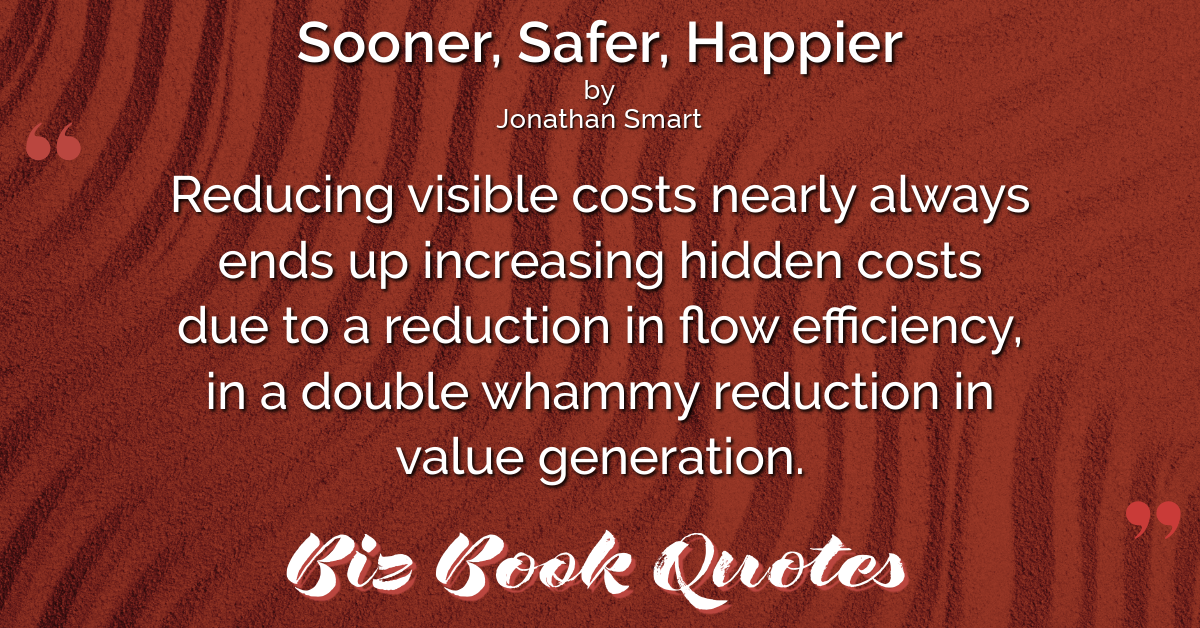 |
Reducing visible costs nearly always ends up increasing hidden costs due to a reduction in flow efficiency, in a double whammy reduction in value generation.
|
146 |
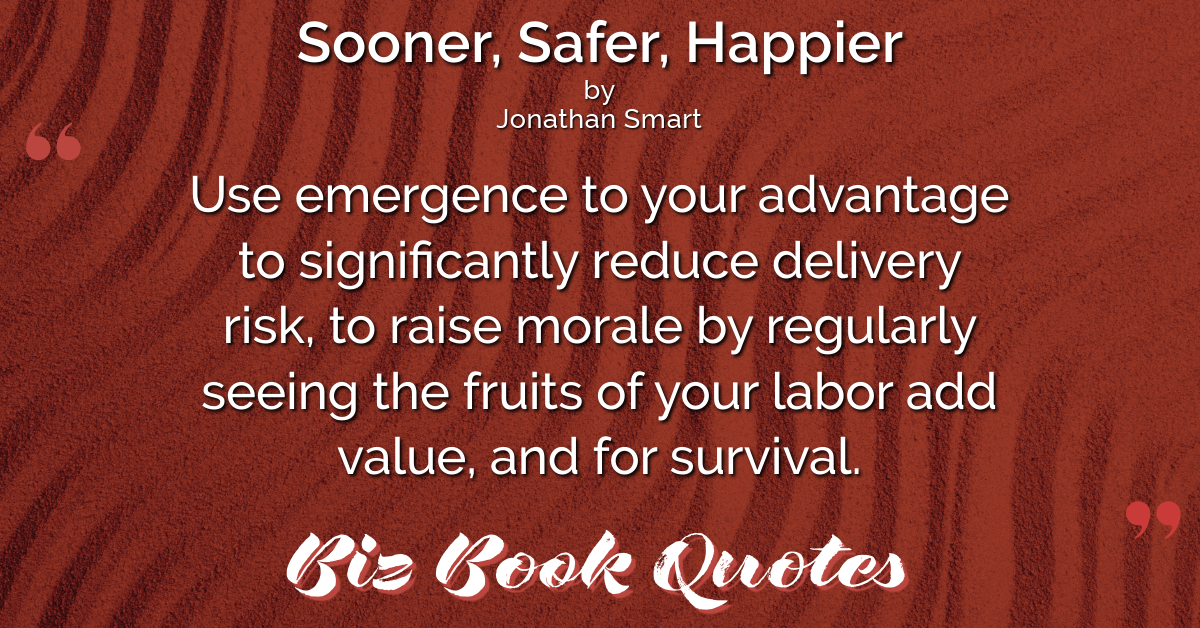 |
Use emergence to your advantage to significantly reduce delivery risk, to raise morale by regularly seeing the fruits of your labor add value, and for survival.
|
147 |
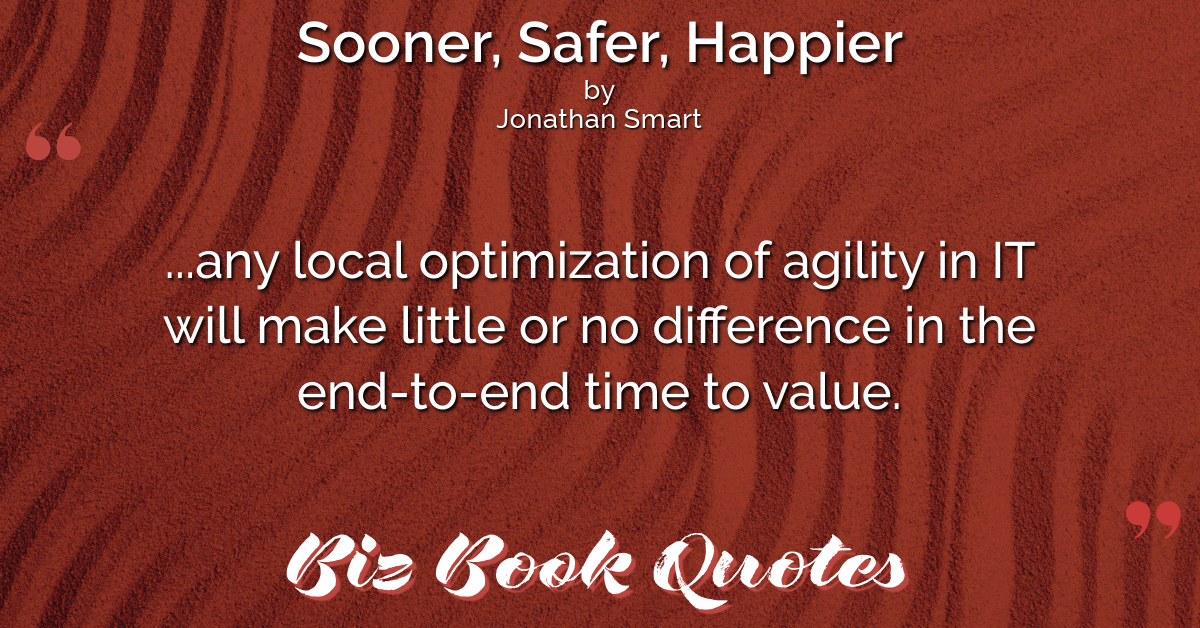 |
…any local optimization of agility in IT will make little or no difference in the end-to-end time to value.
|
170 |
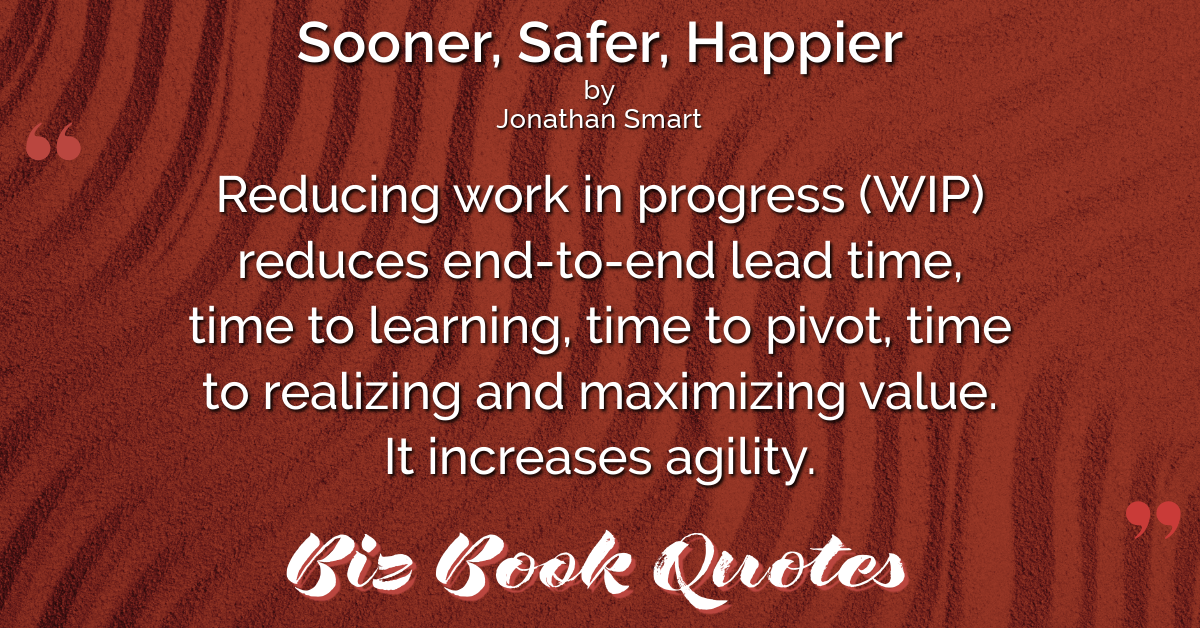 |
Reducing work in progress (WIP) reduces end-to-end lead time, time to learning, time to pivot, time to realizing and maximizing value. It increases agility.
|
176 |
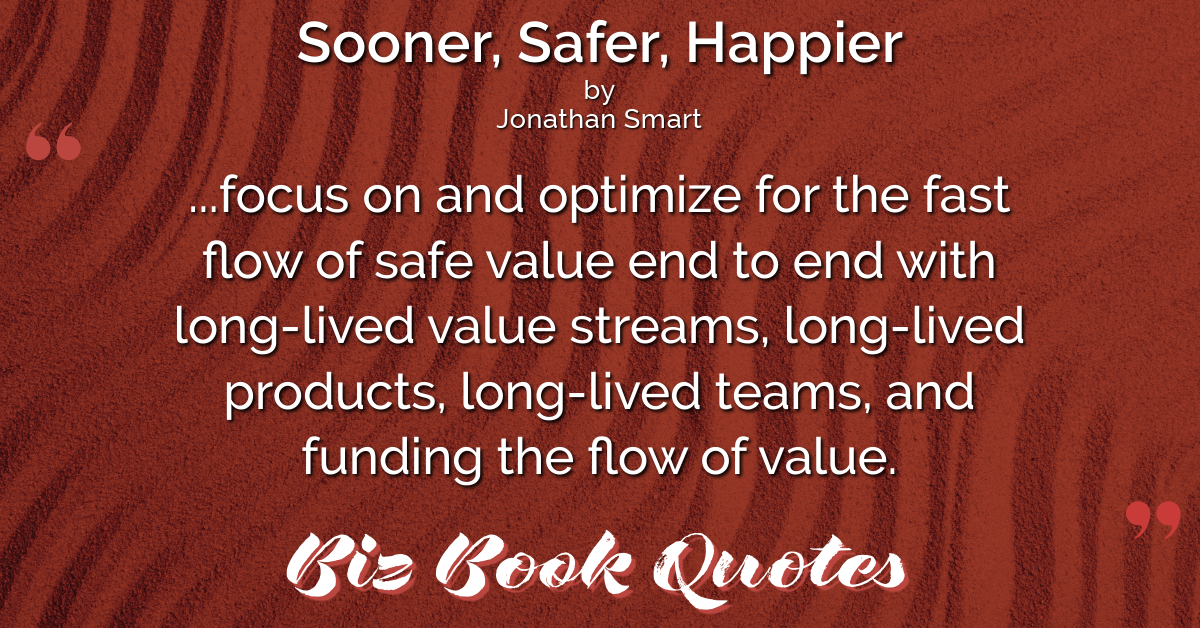 |
…focus on and optimize for the fast flow of safe value end to end with long-lived value streams, long-lived products, long-lived teams, and funding the flow of value.
|
178 |
 |
A lesson learned the hard way is not to worry about getting the value stream identification right at the beginning. Don’t spend too long on it.
|
179 |
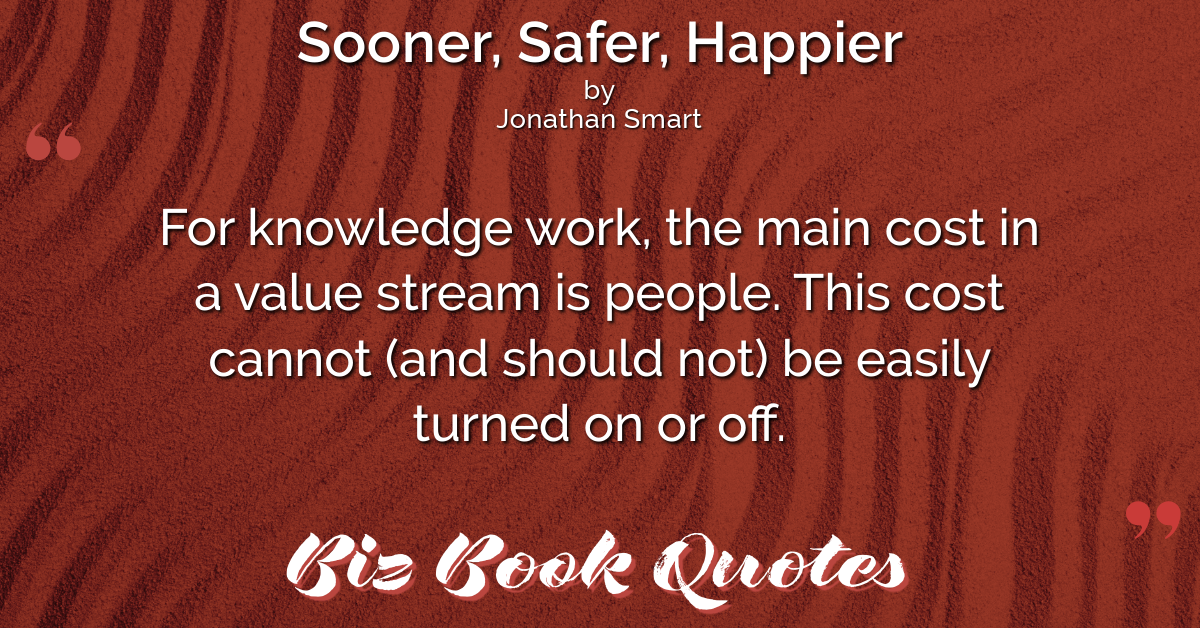 |
For knowledge work, the main cost in a value stream is people. This cost cannot (and should not) be easily turned on or off.
|
190 |
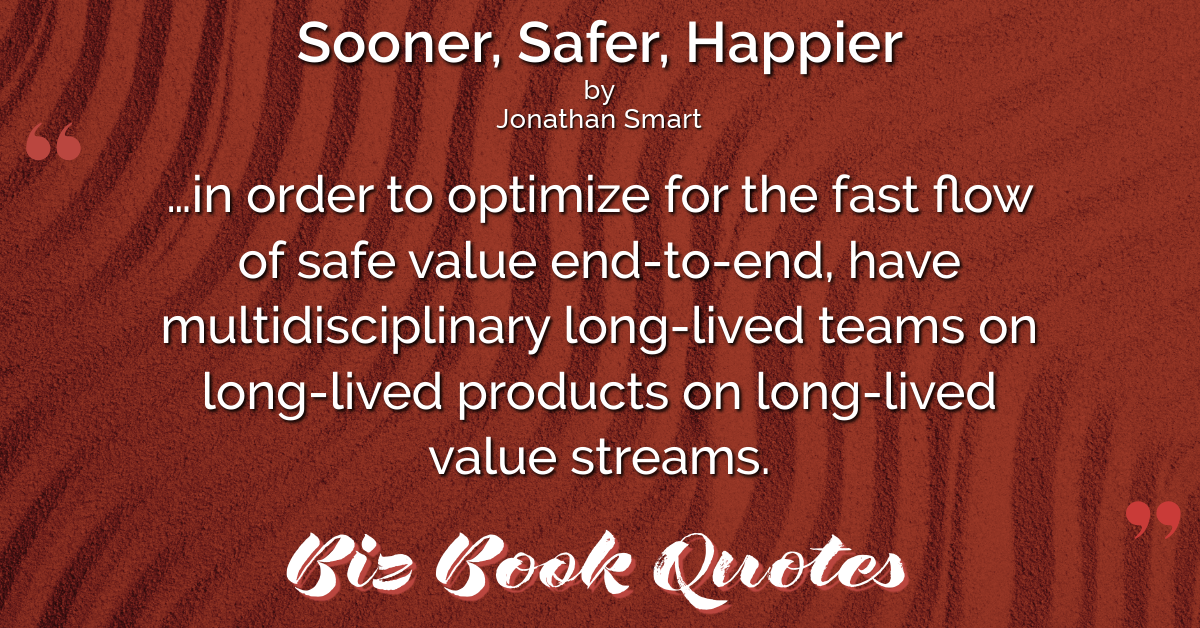 |
…in order to optimize for the fast flow of safe value end-to-end, have multidisciplinary long-lived teams on long-lived products on long-lived value streams.
|
192 |
 |
Aim to get the thinnest vertical slice of real value in the hands of real customers. This de-risks delivery and maximizes learning, providing fast feedback on strategic bets.
|
198 |
 |
Ideally, over time, dependencies are eliminated so that each value stream can deploy changes independently and on its own cadence.
|
203 |